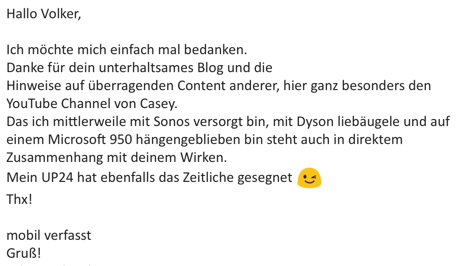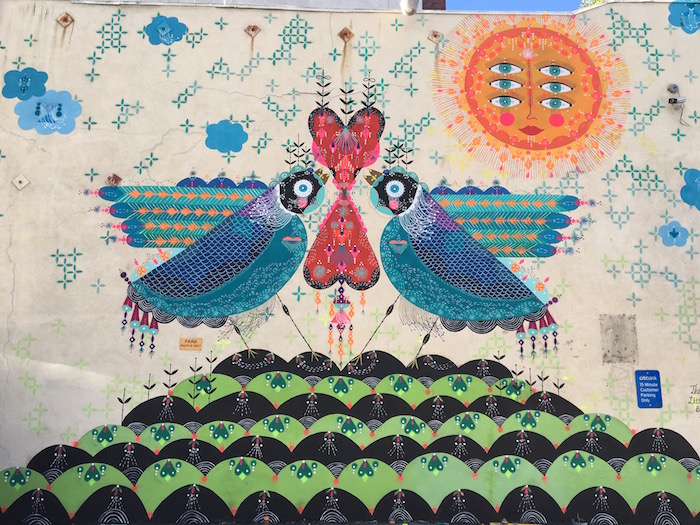 The Adventure, private collection (from The Cosmic Child). All images courtesy the artist, unless otherwise noted
The Adventure, private collection (from The Cosmic Child). All images courtesy the artist, unless otherwise noted
In the late 19th century, Southern California attracted misfits, idealists, and entrepreneurs with few ties to anyone or anything. Swamis, spiritualists, and other self-proclaimed religious authorities quickly made their way out West to forge new faiths. Independent book publishers, motivational speakers, and metaphysical-minded artists and writers then became part of the Los Angeles landscape. City of the Seekers examines how creative freedom enables SoCal artists to make spiritual work as part of their practices.
Urban folk artist Bunnie Reiss' works are magical offerings, protection charms, and visual incantations that seek to remind viewers to focus on the good, despite the bad. Her large-scale murals and painted installations are scattered across unexpected pockets of Los Angeles, imbued with vivid and enchanting tales of magic culled from a neverending sketchbook full of random lists, strange stories, and intricate drawings.
 Amara Kitchen, Highland Park, Los Angeles. Photo: Marnie Sehayek
Amara Kitchen, Highland Park, Los Angeles. Photo: Marnie Sehayek
Raised in Colorado by way of Maryland, Reiss comes from a Polish and Russian family. She describes her upbringing in a conservative Jewish household as being full of hearty meals, lively conversation, and a strong sense of community. Early on, the artist inherited an appreciation for the traditional customs, strong beliefs, and imaginative stories that her Eastern European forebears passed down by word of mouth. "I continue to nurture that part of my brain by developing intricate stories and characters from my everyday life," she tells The Creators Project. And though she rebelled against the organized aspects of Judaism, she acknowledges, "I rely on the mysticism part of it to guide my adult life."
 Little Tokyo, Los Angeles
Little Tokyo, Los Angeles
After earning an MFA from San Francisco Art Institute, Reiss relocated to a small French town in Brittany to study formal drawing and painting. Eventually, she returned to California and found herself in Los Angeles in order to work on a larger scale. "You can spend a lifetime exploring LA and never really see all of it," Reiss describes Los Angeles. "It’s like a strange country with many different states. As a muralist, it’s incredible how many walls there are! I get really excited every time I drive to a new part of town and see more and more potential areas to paint in."
Besides putting up murals in different LA neighborhoods, Reiss also recently published a children's book called The Cosmic Child, which features 15 of her paintings. She works primarily with water-based materials, but depending on the surface, she's been known to use enamel and spray paint as well. "I’m also a secret quilter, and sometimes make huge quilts that look just like my paintings," she admits.
 The Luxelust Life, Highland Park, Los Angeles. Photo: Spencer Harding
The Luxelust Life, Highland Park, Los Angeles. Photo: Spencer Harding
Reiss' inspirations range from animals, folk art, and old woodcut illustrations, to magical symbols and the stars. "I want people to feel they have the right to look at beautiful things, to feel good—even for just a quick moment—when walking by one of my murals," she explains. "There’s a kind of freedom one gets from just letting it all go. I believe strongly that what I am doing is part of a larger 'job' and that getting up to create and release every day keeps a small part of this giant universe moving along like an inchworm. I keep things simple, so my work can continue to grow."
 The Donut Farm, Silver Lake, Los Angeles
The Donut Farm, Silver Lake, Los Angeles
As part of a ritual to develop her personal and creative growth, Reiss immerses herself in nature and camps in her VW van as much as possible. If nothing else, it enables her to simply marvel at the elusive, intervening spaces between the natural and man-made. "I love being in a huge, bustling city that is literally surrounded by mountains and the ocean," she says. "There’s nature all around us, and that’s super unusual to have both options. I can be Downtown around all the noise and then just drive 30 minutes and be in the Angeles National Forest. It’s pretty incredible."
 Tree of Life, private collection
Tree of Life, private collection
Though Reiss feels that the world can sometimes seem like a dark place full of bad news, she believes that individuals have the power to personally transform reality. "You can take a stab at changing the world by changing someone’s mood," she explains. "It sounds silly, but feeling good can lead to better decisions, less fear, more openness, more understanding. There’s something really amazing about being impacted by a painting or installation in a public space, or in your neighborhood. You get a sense of something bigger than yourself, and that you are somehow part of it. It’s reassuring, motivating, and just makes you think."
 Magic Owl, Manila, Philippines
Magic Owl, Manila, Philippines
 Studio setting. Photo: Marnie Sehayek
Studio setting. Photo: Marnie Sehayek
 Little Trucky I call David Bowie. Photo: Marnie Sehayek
Little Trucky I call David Bowie. Photo: Marnie Sehayek
Bunnie Reiss’ work is featured in a group show at La Luz de Jesus in Los Angeles from August 5 - August 28. Follow her on Instagram and visit her website here.
Related:
Meet the Soft-Sculpture Artist Making Beaded Paintings | City of the Seekers
"You’ll Be Back in the Next Life, So Don’t Stress Out" | City of the Seekers
Worship the Ceramic Booty | City of the Seekers

















 The Adventure, private collection (from The Cosmic Child). All images courtesy the artist, unless otherwise noted
The Adventure, private collection (from The Cosmic Child). All images courtesy the artist, unless otherwise noted Amara Kitchen, Highland Park, Los Angeles. Photo: Marnie Sehayek
Amara Kitchen, Highland Park, Los Angeles. Photo: Marnie Sehayek Little Tokyo, Los Angeles
Little Tokyo, Los Angeles The Luxelust Life, Highland Park, Los Angeles. Photo: Spencer Harding
The Luxelust Life, Highland Park, Los Angeles. Photo: Spencer Harding The Donut Farm, Silver Lake, Los Angeles
The Donut Farm, Silver Lake, Los Angeles Tree of Life, private collection
Tree of Life, private collection Magic Owl, Manila, Philippines
Magic Owl, Manila, Philippines Studio setting. Photo: Marnie Sehayek
Studio setting. Photo: Marnie Sehayek Little Trucky I call David Bowie. Photo: Marnie Sehayek
Little Trucky I call David Bowie. Photo: Marnie Sehayek




 The existence of two new Nexus-branded smartphones isn’t official by any means, but if a new rumor is to be believed, Verizon Wireless customers have something to look forward to.
The existence of two new Nexus-branded smartphones isn’t official by any means, but if a new rumor is to be believed, Verizon Wireless customers have something to look forward to.